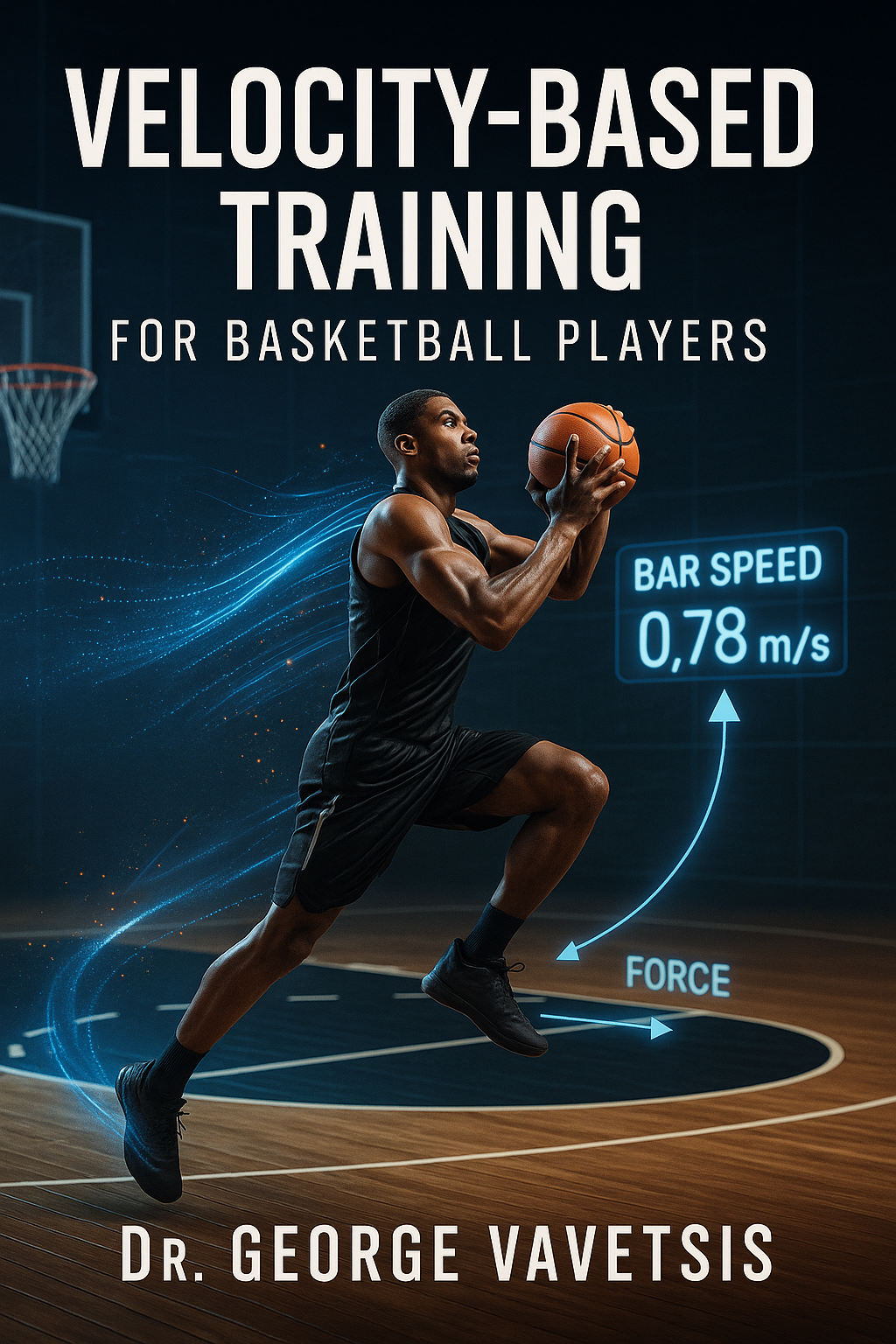
Velocity-Based Training for Basketball Players
Pages: 3934
As a strength and conditioning coach with a lifelong passion for performance enhancement in basketball, I have always sought methods to bridge the gap between training theories and real-world applications. Over the years, I’ve seen the evolution of athletic training from rudimentary weightlifting programs to precision-based methodologies that leverage cutting-edge technology. Among the most transformative approaches I’ve encountered is Velocity-Based Training (VBT). This book, Velocity-Based Training for Basketball Players by Dr. George Vavetsis, serves as both a scientific foundation and a practical guide to implementing VBT for the unique demands of basketball.
Basketball, as a high-intensity, explosive sport, challenges athletes to perform repeated actions of sprinting, jumping, and rapid directional changes. It is not enough to simply build strength; athletes need power, speed, agility, and precision, all while maintaining resilience against fatigue and injury. Traditional training methods, while effective to a point, often rely on outdated load calculations or generic protocols that fail to account for individual athlete variability. This is where VBT emerges as a game-changer.
What excites me most about VBT is its adaptability. Instead of prescribing fixed weights or percentages of one-repetition maximums (1RMs), VBT focuses on bar speed and movement velocity, tailoring training loads to the athlete’s daily readiness. This personalized approach not only optimizes performance but also minimizes the risk of overtraining or injury—something every coach and athlete can appreciate. Moreover, VBT introduces real-time feedback, empowering athletes to take ownership of their training while staying motivated and engaged.
Dr. Vavetsis masterfully breaks down the science behind VBT, from force-velocity profiling to the integration of cutting-edge tools like accelerometers and linear position transducers. He demonstrates how VBT can be used not only to build strength and power but also to monitor fatigue, recover efficiently, and even prevent injuries. The book goes beyond the basics by exploring position-specific strategies for basketball players, acknowledging that the physical demands of a point guard differ significantly from those of a center.
Another standout feature of this book is its practicality. The inclusion of specific drills, programming frameworks, and case studies makes it an indispensable resource for coaches at all levels. Whether you’re working with high school athletes or professional players, the strategies outlined here will elevate your ability to design and execute training programs with precision and purpose.
As someone who has witnessed the transformative power of VBT firsthand, I wholeheartedly endorse this book. Dr. Vavetsis not only provides a roadmap for implementing VBT but also challenges us to rethink traditional training paradigms. His work is a testament to the importance of blending science with practice to achieve peak athletic performance.
For coaches, athletes, and sports scientists seeking to stay ahead of the curve, Velocity-Based Training for Basketball Players is more than just a guide—it’s a call to action. Embrace the potential of VBT and watch your athletes thrive both on and off the court.
